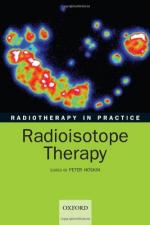|
This section contains 516 words (approx. 2 pages at 300 words per page) |

|
Atomic theory holds that the nucleus of an atom consists of protons and neutrons and describes the elements of the periodic table as atoms consisting of nuclei surrounded by electrons. Identical elements have the same atomic number, Z, which is equal to the number of protons in the nucleus, and the same mass number, A, which is equal to the number of protons plus the number of neutrons. Atoms with the same atomic number but a different number of neutrons, or a different mass number A, are called isotopes. For example, hydrogen has an atomic number of Z = 1, so it has one proton, but it occurs as three isotopes: 1-hydrogen (Z=1; A=1), deuterium or 2-hydrogen (Z=1, A=2), and tritium or 3-hydrogen (Z=1, A=3) in which the respective nuclei contain zero, one or two neutrons. The isotopes of an element are by convention prefixed by their mass number. The...
|
This section contains 516 words (approx. 2 pages at 300 words per page) |

|


